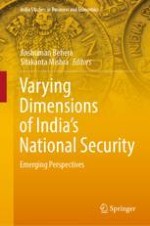2022 | OriginalPaper | Chapter
4. ‘Secrecy as Security Strategy’ in India’s Nuclear Governance
Author : Sitakanta Mishra
Published in: Varying Dimensions of India’s National Security
Publisher: Springer Nature Singapore
Activate our intelligent search to find suitable subject content or patents.
Select sections of text to find matching patents with Artificial Intelligence. powered by
Select sections of text to find additional relevant content using AI-assisted search. powered by
